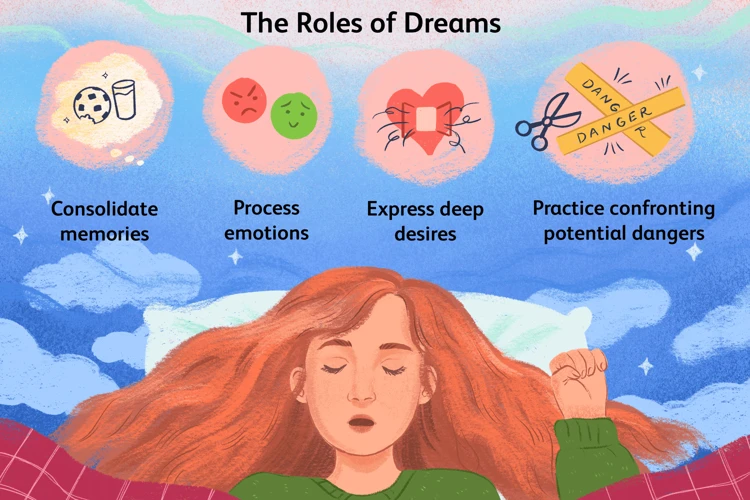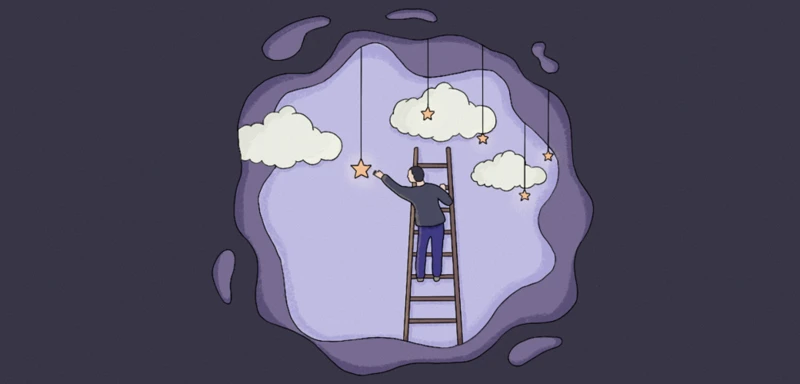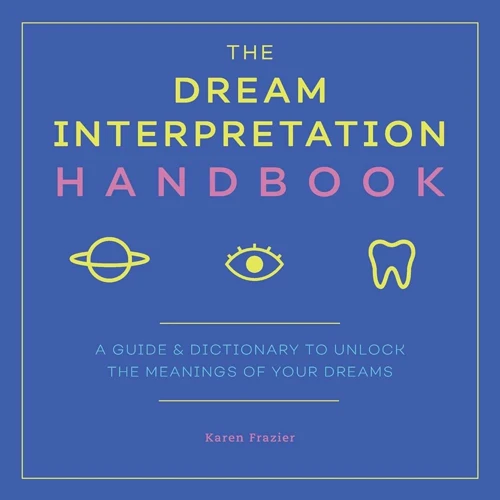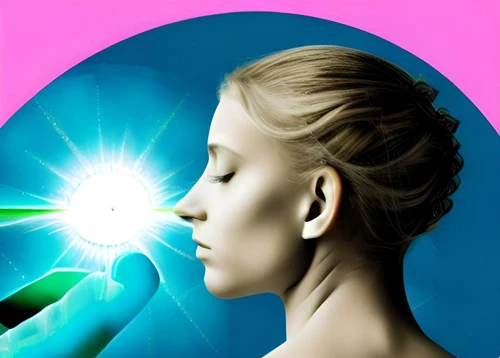Have you ever wondered about the mysterious world of dreams and their connection to the unconscious mind? Dreams have long fascinated psychologists, philosophers, and ordinary individuals alike. They hold a wealth of hidden meanings and symbolism that can offer insights into the depths of our subconscious. In this article, we will delve into the intricate relationship between dreams and the unconscious mind, exploring the various theories and interpretations surrounding them. Prepare to embark on a journey of self-discovery and unravel the enigmatic realm of the unconscious through the captivating world of dreams.
The Unconscious Mind

The unconscious mind, as coined by psychoanalyst Sigmund Freud, refers to the part of our psyche that lies beneath our conscious awareness. It is a reservoir of thoughts, desires, memories, and emotions that influence our behavior and experiences, often without us realizing it. This hidden realm of the mind plays a significant role in shaping our thoughts, feelings, and actions. Understanding the unconscious mind can provide valuable insights into our motivations, fears, and desires. It acts as a gateway to our deepest thoughts and holds the key to unlocking the mysteries of our dreams. Exploring the depths of the unconscious mind can lead to personal growth, self-discovery, and even psychological healing. By delving into the realms of dreams, we can decode the messages from our unconscious and gain a greater understanding of ourselves and the world around us. To comprehend the full significance of the unconscious mind, we must delve into its definition and its role in psychology.
Definition
The definition of the unconscious mind can be a complex and multifaceted concept. It refers to the part of our mind that operates outside of our conscious awareness. According to Freud, the unconscious mind is comprised of hidden desires, repressed memories, and unresolved conflicts that shape our thoughts and behaviors. While we may not be aware of these unconscious influences, they can still exert a powerful impact on our lives. Understanding the definition of the unconscious mind is crucial as it sets the foundation for exploring its role in psychology and its connection to dreams. By uncovering the depths of the unconscious, we can gain valuable insights into our true selves and embark on a journey of self-discovery and personal growth. To fully grasp the significance of the unconscious mind, it is essential to examine its intricate relationship with dreams, which serve as a window into the labyrinth of our subconscious. For a deeper understanding of the importance of dreams and their role in psychological healing, you can read our comprehensive guide on the role of dreams in psychological healing.
Role in Psychology
The role of the unconscious mind in psychology is of great significance. It serves as a gateway to understanding the complexities of human behavior and mental processes. Psychologists recognize the unconscious mind as a powerful force that influences our thoughts, emotions, and behaviors, often without our conscious awareness. It is believed to hold repressed memories, desires, and unresolved conflicts that shape our personality and can give rise to psychological issues. The unconscious mind plays a crucial role in psychoanalysis, a therapeutic approach developed by Sigmund Freud. According to Freud, our unconscious desires and fears manifest in various ways, including dreams. Analyzing dream symbols is a valuable tool in psychological interpretation and understanding the unconscious. Dreams can provide insights into our innermost thoughts and emotions and contribute to self-discovery and personal growth. Freud’s dream analysis technique involves interpreting dream symbols and accessing the latent content hidden within the dream. By exploring the symbolic meanings embedded in our dreams, we can uncover important aspects of our unconscious mind. Understanding the role of the unconscious mind in psychology is essential for gaining insight into our thoughts, emotions, and behaviors. It allows us to explore our dreams from a psychological perspective and tap into the wisdom of our unconscious mind. For more information on analyzing dream symbols from a psychological viewpoint, you can read our article on analyzing dream symbols from a psychological perspective.
Dreams and Their Meanings

Dreams have long been a subject of fascination and intrigue. As we sleep, our minds venture into a realm where the conscious mind takes a backseat and the unconscious mind takes center stage. Dreams hold significant meaning and can provide valuable insights into our thoughts, emotions, and experiences. They serve as a window to the subconscious, offering glimpses into our deepest desires, fears, and unresolved issues. The exploration of dreams and their meanings has been a topic of interest for psychologists, with pioneers like Sigmund Freud and Carl Jung providing valuable insights into dream analysis. Freud believed that dreams were the “royal road to the unconscious,” and he developed a method of interpreting dream content to uncover hidden desires and conflicts. Jung, on the other hand, took a more symbolic approach, viewing dreams as representations of archetypes and the collective unconscious. Understanding the importance and symbolism of dreams can lead to personal growth and self-awareness. By unraveling the messages and symbols within our dreams, we can gain valuable insights into our innermost thoughts and emotions. Exploring Freud’s dream analysis (link: /exploring-freuds-dream-analysis/) can shed light on the significance of dreams and how they can be interpreted to uncover hidden meanings in our daily lives.
Importance of Dreams
Dreams hold a profound importance in our lives, offering a window into the depths of our unconscious mind. They allow us to explore our fears, desires, and unresolved emotions in a symbolic and metaphorical way. Dreams can provide valuable insights and meanings that help us navigate through life’s challenges. They offer a unique opportunity for self-reflection, personal growth, and psychological healing. By paying attention to our dreams and analyzing their symbols and themes, we can gain a deeper understanding of ourselves and the inner workings of our mind. Dreams often serve as a channel for processing emotions, resolving conflicts, and finding creative solutions to problems. They can offer guidance, inspiration, and a deeper connection to our subconscious. Embracing the importance of dreams allows us to tap into the hidden wisdom of our unconscious mind and unlock the transformative power they hold.
Different Types of Dreams
Different types of dreams can offer unique insights into the unconscious mind. Dreams come in various forms and serve diverse purposes, each carrying its own significance. Here are some of the different types of dreams:
1. Normal Dreams: These are the most common dreams that occur during the REM (rapid eye movement) stage of sleep. They can be a reflection of our daily experiences, thoughts, and emotions.
2. Nightmares: Nightmares are intense and disturbing dreams that often evoke fear, anxiety, or sadness. They may arise from traumas, anxieties, or unresolved issues, and can provide a window to our deepest fears.
3. Recurring Dreams: Recurring dreams are dreams that repeat themselves over time, often with slight variations. These dreams may point to unresolved issues or recurrent themes in our lives that require attention and resolution.
4. Lucid Dreams: Lucid dreams occur when we become aware that we are dreaming while still in the dream state. This awareness allows us to actively participate and control the dream narrative, providing a unique opportunity for self-exploration and experimentation.
5. Prophetic Dreams: Prophetic dreams are believed to foreshadow future events, providing glimpses of things to come. While the scientific explanation is uncertain, these dreams have captivated human imagination throughout history.
6. Creative Dreams: Creative dreams are known for their imaginative and artistic qualities. They can often inspire new ideas, problem-solving, and artistic endeavors, acting as a wellspring of creativity.
Understanding the different types of dreams can help us decipher the messages our unconscious mind is trying to communicate. Each dream type offers a window into our innermost thoughts, emotions, and desires, guiding us towards personal growth, self-awareness, and psychological healing. Analyzing these dreams can provide valuable insights into our mental and emotional states, helping us navigate the complexities of our inner world. By paying attention to the varied types of dreams we experience, we can unlock the hidden treasures of our unconscious mind.
(Note: To read more about the role of dreams in psychological healing, you can refer to the role of dreams in psychological healing article.)
Unveiling the Unconscious Mind through Dreams

Unveiling the unconscious mind through dreams offers a fascinating window into the depths of our psyche. Psychoanalyst Sigmund Freud believed that dreams served as a pathway to the unconscious, providing insights into our hidden desires, fears, and unresolved conflicts. According to Freud’s interpretation, dreams are symbolic representations of our unconscious wishes and impulses. These hidden desires, socially unacceptable or repressed thoughts, find expression in the form of dream symbols and imagery.
On the other hand, the renowned psychologist Carl Jung took a slightly different perspective. Jung believed that dreams were not just a manifestation of our unconscious desires, but also a way for our psyche to communicate with us. He saw dreams as a means of compensating for imbalances in our conscious mindset, providing guidance and bringing awareness to neglected aspects of our personality.
Dreams often contain a rich tapestry of symbolism. Symbols in dreams can be universal archetypes or personal symbols specific to an individual’s experiences. Archetypal symbols such as water, animals, or bridges can carry collective meanings that transcend cultural boundaries. Personal symbols, on the other hand, are unique to an individual and hold personal significance.
Deciphering dream symbols requires careful analysis and interpretation. The symbolism in dreams is often subjective and open to multiple interpretations. It is crucial to consider the context of the dreamer’s life, experiences, and emotions to unlock the true meaning behind the symbols.
Understanding the connection between dreams and the unconscious mind can lead to profound self-discovery and personal growth. Exploring our dreams allows us to explore the depths of our psyche and gain insights into our hidden desires, fears, and past traumas. By decoding the symbolism in our dreams and interpreting their messages, we can gain a better understanding of ourselves and make positive changes in our lives. The process of unraveling the mysteries of the unconscious mind through dreams is an ongoing journey that holds the potential for profound transformation and deepening self-awareness.
Sigmund Freud’s Interpretation
Sigmund Freud, the renowned Austrian psychoanalyst, made significant contributions to our understanding of dreams and the unconscious mind. According to Freud’s interpretation, dreams serve as a window into our deepest desires and repressed thoughts. He believed that dreams were the “royal road to the unconscious,” providing a means to access hidden aspects of ourselves that are not readily available in our waking state. Freud introduced the concept of dream symbolism, suggesting that the content of dreams is laden with disguised meanings and symbols that represent our unconscious desires and conflicts. He proposed that dreams can be analyzed and interpreted through a technique known as dream analysis, where the hidden symbols and latent content of the dream are brought to light. Freud’s interpretation of dreams revolutionized the field of psychology and laid the foundation for further exploration of the unconscious mind. His theories continue to be influential and have shaped our understanding of dreams and their connection to the deeper recesses of the human mind.
Carl Jung’s Perspective
Carl Jung, a prominent Swiss psychiatrist and psychoanalyst, had a unique perspective on dreams and the unconscious mind. He believed that dreams were not just random manifestations of our subconscious, but rather symbols that held profound meaning and guidance. According to Jung, dreams provide a window into the collective unconscious, a realm shared by all individuals that contains universal archetypes and symbols. These archetypes, such as the mother, the trickster, or the wise old man, represent fundamental human experiences and emotions. Jung believed that dreams served as a way for the unconscious to communicate with the conscious mind, offering insights and messages that can aid in our personal development and individuation process. He emphasized the importance of dream analysis and the exploration of dream symbols in understanding the deeper aspects of our psyche. Jung’s perspective on dreams differs from Freud’s in that he saw dreams as more than just wish fulfillment and instead viewed them as a pathway to spiritual and psychological growth. By deciphering the symbolism within our dreams, we can tap into the wisdom of the unconscious and gain a deeper understanding of ourselves and the world around us. This perspective offers a rich and multi-layered approach to the interpretation and exploration of the unconscious mind through the realm of dreams.
Symbolism in Dreams

Symbolism in dreams is a fascinating aspect that reveals the intricate language of the unconscious mind. Dreams often communicate through symbols, using metaphorical representations to convey deeper meanings. These symbols can be universal or personal, and their interpretation requires careful analysis and context. Common dream symbols include water, which can signify emotions and the subconscious; falling, representing a loss of control or insecurity; and flying, symbolizing freedom and liberation. The interpretation of dream symbols depends on various factors, including the dreamer’s personal experiences, cultural background, and emotions during the dream. Analyzing dream symbols from a psychological perspective allows us to delve into the hidden messages that our unconscious mind is trying to convey. Through this analysis, we can gain insights into our desires, fears, conflicts, and unresolved issues. Exploring the symbolism in dreams provides a window into our inner world and helps us unravel the complex tapestry of our thoughts and emotions. By understanding dream symbols, we can tap into the vast resources of our unconscious mind and uncover the deeper meanings hidden within our dreams.
Common Dream Symbols
Common dream symbols can offer valuable insights into the hidden meanings behind our dreams. Dreams often present us with symbolic imagery that may not be literal but represents something deeper. These symbols can vary widely, but some recurring motifs include water, such as oceans or rivers, which often symbolize emotions and the depths of the unconscious mind. Another common symbol is animals, which may represent certain characteristics or instincts. For example, a snake might symbolize transformation or healing, while a bear may symbolize strength or protection. Additionally, flying represents freedom and liberation, while falling may signify a loss of control or insecurity. By acknowledging and interpreting these symbols, we can gain a deeper understanding of the messages that our dreams are trying to convey. Understanding the symbolism in our dreams can provide valuable insights into our unconscious thoughts, desires, and emotions.
Interpreting Dream Symbols
Interpreting dream symbols is a fascinating aspect of understanding the deeper meanings hidden within our dreams. Dreams are often filled with symbolic imagery that may not make logical sense at first glance. However, these symbols can hold profound significance when analyzed from a psychological perspective. Dream symbols can range from common objects to abstract concepts and can vary in meaning depending on the individual’s personal experiences and associations. It is crucial to approach dream interpretation with an open mind and an understanding that the symbolism may be unique to the dreamer. Analyzing dream symbols involves examining the emotions, actions, and context surrounding the symbol to gain insight into its significance. For example, dreaming about a snake could represent transformation, fear, or sexuality, depending on the individual’s personal connection to snakes. By exploring the symbolism in our dreams, we can uncover hidden messages from the unconscious mind and gain a deeper understanding of our inner thoughts and desires. For those interested in delving further into the art of dream interpretation, there are various psychological approaches and methods available to decipher dream symbols. Understanding these techniques can provide a framework for unraveling the rich symbolism that lies within our dreams.
Lucid Dreaming and the Unconscious Mind

Lucid dreaming is a fascinating phenomenon where the dreamer becomes aware that they are dreaming while still in the dream state. It is a state of heightened consciousness within the dream world. Lucid dreaming provides a unique opportunity to explore and interact with the unconscious mind in a conscious and deliberate manner. When we become lucid in a dream, we can actively engage with the symbols, characters, and settings that manifest within our unconscious mind. This empowers us to delve deeper into the hidden aspects of our psyche and gain valuable insights into ourselves. During lucid dreaming, we can consciously direct the dream narrative, ask questions to dream characters or objects, and even experiment with different scenarios. This heightened level of self-awareness allows us to explore the hidden depths of our unconscious, uncovering buried aspects of our personality, desires, and fears. Lucid dreaming serves as a bridge between the conscious and unconscious mind, facilitating a direct connection and providing a platform for self-discovery and personal growth. It offers a unique opportunity to consciously navigate the world of dreams and tap into the limitless potential of the unconscious mind.
What is Lucid Dreaming?
Lucid dreaming is a fascinating phenomenon that occurs when a person becomes aware that they are dreaming while still in the dream state. In this state of conscious awareness, individuals can actively participate and manipulate the contents of their dreams. It is a remarkable experience characterized by a heightened sense of control and self-awareness within the dream world. During a lucid dream, individuals may be able to shape the dream narrative, fly, explore different environments, and interact with dream characters. This state of consciousness opens up a realm of limitless possibilities, where one can potentially overcome fears, unlock creativity, and explore the depths of the unconscious mind. Lucid dreaming can provide a unique platform for self-exploration and personal growth, allowing individuals to tap into their deepest desires, fears, and aspirations. While the exact mechanisms behind lucid dreaming are still a subject of scientific investigation, it is undoubtedly an intriguing phenomenon that offers a window into the boundless potential of the human mind.
Exploring the Unconscious in Lucid Dreams
Exploring the unconscious mind becomes even more fascinating when we enter the world of lucid dreams. Lucid dreaming is a unique state of consciousness where the dreamer is aware of being in a dream and can exert control over the dream’s events and environment. This heightened level of awareness opens up a realm of possibilities for exploring the depths of the unconscious mind. In a lucid dream, we can consciously engage with the symbols, emotions, and narratives that emerge from our unconscious. We can actively interact with dream characters, objects, and landscapes, gaining valuable insights into our innermost thoughts and desires.
During lucid dreaming, the boundaries between the conscious and unconscious mind blur, allowing us to access hidden aspects of ourselves. We may encounter archetypal symbols or reoccurring themes that hold significant meaning in our lives. Exploring the unconscious through lucid dreams enables us to confront our fears, work through emotional challenges, and gain a deeper understanding of our own psyche.
Lucid dreaming also offers a unique opportunity to experiment with and explore new ideas, experiences, and perspectives. We can use this altered state of consciousness to consciously engage with our unconscious desires and motivations, fostering personal growth and self-discovery. By intentionally entering a lucid dream state, we can tap into the limitless potential of our unconscious mind and unlock our creative potential.
The practice of lucid dreaming has gained attention in recent years, with techniques and methods developed to induce and prolong lucidity in dreams. Techniques such as reality checks, keeping dream journals, and visualization exercises can increase the likelihood of having lucid dreams. Exploring the unconscious mind through lucid dreams can be a powerful tool for self-exploration, personal development, and gaining a deeper understanding of our own consciousness and inner world. It is a journey that offers endless possibilities for growth, healing, and transformation.
Interpreting Dreams

Interpreting dreams is a fascinating process that involves decoding the symbolism and hidden messages that occur during sleep. It is an art and science that has been practiced for centuries by various cultures and has many psychological approaches. One of the most well-known methods is through the psychological lens of Sigmund Freud and Carl Jung. Freud believed that dreams were a window into the unconscious mind, and their analysis could uncover repressed desires and unresolved conflicts. He introduced the concept of dream symbols, where objects or events in dreams represented hidden meanings. For example, dreaming about water could symbolize emotions or the unconscious mind itself. Carl Jung, on the other hand, believed that dreams were not just influenced by personal experiences but also by the collective unconscious. He emphasized the importance of archetypes, universal symbols that tap into the collective human experience, in dream interpretation. Interpreting dreams requires paying attention to emotions, symbols, and personal associations. Various methods are available to decipher dream symbols, such as keeping a dream journal, free association, and exploring personal experiences and memories related to the dream. By understanding the complex layers of meaning in dreams, we can gain insights into our fears, desires, and potential solutions to personal challenges. Through dream interpretation, we can bridge the gap between the conscious and unconscious mind, leading to self-awareness and personal growth.
Psychological Approaches
Psychological approaches to interpreting dreams offer valuable insights into the connection between dreams and the unconscious mind. One such approach is psychoanalysis, developed by Sigmund Freud. According to Freud, dreams are the “royal road to the unconscious,” providing a means to access repressed thoughts and desires. Freud believed that dreams were symbolic representations of unconscious conflicts and desires, and that analyzing these symbols could reveal hidden meanings. Another psychological approach is the cognitive perspective, which focuses on understanding the cognitive processes involved in dreaming. This approach suggests that dreams serve to consolidate memories, process emotions, and problem-solve. Cognitive psychologists examine the content and structure of dreams to gain insights into cognitive functioning. Additionally, various other psychological approaches, such as the humanistic approach and the psychodynamic approach, offer different perspectives on the interpretation of dreams and the role of the unconscious mind. By utilizing these diverse psychological approaches, we can deepen our understanding of dreams and unravel the profound connection between dreams and the unconscious mind.
Methods for Deciphering Dream Symbols
Deciphering dream symbols can be a fascinating and insightful process. While dreams are highly subjective and personal, there are several methods that can help unravel the meaning behind the symbols within them.
1. Journaling: Keeping a dream journal is a valuable tool for understanding dream symbols. Upon waking, jot down any significant symbols, emotions, or events from your dream. Reviewing your journal over time may reveal patterns, recurrent symbols, or connections between your dreams and waking life.
2. Free Association: This technique involves associating various meanings or emotions with each dream symbol. Write down the first word or phrase that comes to mind when you think of a particular symbol. This method taps into your unconscious mind and allows for a deeper exploration of the symbol’s personal significance.
3. Research and Symbolism: Consult external resources, such as dream dictionaries or online sources, to explore common interpretations of dream symbols. However, keep in mind that symbols can have different meanings for each individual depending on their unique experiences and associations. Trust your intuition and personal connection to the symbol when using external resources.
4. Amplification: This method, popularized by Swiss psychiatrist Carl Jung, involves expanding upon dream symbols through personal reflection and exploration. Consider the emotions, memories, or experiences that a symbol evokes within you. Analyze its potential connections to your inner world or current life circumstances.
5. Dialogue and Interpretation: Engage in a dialogue with the symbols present in your dreams. Imagine having a conversation with the symbol or asking it questions. This technique can provide an opportunity for deeper insight and understanding by tapping into your unconscious mind’s responses.
Remember, the interpretation of dream symbols is highly subjective, and it is essential to trust your own instincts and intuition. The meaning of a symbol can vary greatly from person to person, so be open to the personal significance that arises during the interpretation process. By using these methods, you can begin to decode the rich symbolism within your dreams and gain a greater understanding of your unconscious mind’s messages.
Benefits of Understanding the Unconscious Mind
Understanding the unconscious mind can have numerous benefits that positively impact our lives. By delving into the depths of our subconscious, we gain valuable insights into our innermost thoughts, emotions, and motivations. This self-discovery allows us to cultivate a deeper understanding of ourselves, leading to personal growth and development. By becoming aware of the hidden influences that shape our behavior, we can break free from negative patterns and make conscious decisions that align with our true desires. Additionally, understanding the unconscious mind can aid in problem-solving and creativity. As we tap into the vast well of our subconscious, we open ourselves up to new perspectives and innovative ideas. The unconscious mind holds a wealth of untapped potential waiting to be harnessed. By unraveling the mysteries of this hidden realm, we can unlock our true creative abilities and approach challenges with fresh insight. Understanding the unconscious mind can facilitate psychological healing. Dreams provide a powerful avenue for processing and resolving unresolved emotions and traumas. By analyzing dream symbols and exploring their meanings, we can gain clarity and release emotional baggage. This process of psychological healing can lead to greater emotional well-being and overall life satisfaction. Understanding the unconscious mind offers a multitude of benefits, including self-discovery, problem-solving, creativity, and psychological healing. It allows us to tap into our true potential and lead more fulfilling lives.
Self-Discovery and Personal Growth
Self-discovery and personal growth are two profound benefits that can be gained through understanding the unconscious mind. As we explore our dreams and decode the symbols they present, we gain valuable insights into our own thoughts, emotions, and desires. This process of self-reflection allows us to uncover hidden aspects of ourselves and confront unresolved issues. By delving into our unconscious, we can gain a deeper understanding and acceptance of our true selves. This newfound self-awareness sets the stage for personal growth and transformation. It enables us to identify patterns, overcome challenges, and make positive changes in our lives. Through the exploration of our dreams and the unconscious mind, we embark on a journey of self-discovery that leads to personal growth, enhanced self-esteem, and a sense of empowerment. Ultimately, understanding the unconscious can help us to live more authentic, fulfilling lives.
Problem Solving and Creativity
Problem solving and creativity are two incredible benefits that come from understanding the unconscious mind and its connection to dreams. When we tap into our unconscious through dreams, we can gain valuable insights that can help us tackle complex problems and find innovative solutions. Dreams have the ability to present us with new perspectives and alternative ways of thinking that may not be immediately accessible in our waking state. By analyzing the symbolism and messages within our dreams, we can unlock the creative potential of our unconscious mind. Additionally, dreams provide a fertile ground for creative inspiration. Many artists, writers, and inventors throughout history have attributed their creative breakthroughs to their dreams. The unconscious mind has an uncanny ability to connect seemingly unrelated ideas and concepts, giving rise to original and imaginative thoughts. By embracing the wisdom of our dreams and the unconscious mind, we can enhance our problem-solving abilities and tap into our innate creativity to explore new possibilities and approaches. Whether we want to find innovative solutions to life’s challenges or simply unleash our creative potential, understanding the connection between dreams and the unconscious mind proves to be a powerful tool.
Conclusion
In conclusion, the connection between dreams and the unconscious mind is a fascinating subject that has intrigued scholars and individuals for centuries. By exploring the depths of our dreams and deciphering their meanings, we can gain valuable insights into our unconscious thoughts, desires, and fears. The unconscious mind, a reservoir of hidden thoughts and memories, plays a significant role in shaping our behavior and experiences. From Sigmund Freud’s interpretation to Carl Jung’s perspective, various theories have shed light on the significance of dreams in understanding the unconscious. Symbolism in dreams provides a glimpse into the messages our unconscious is trying to convey, and understanding these symbols can unveil deeper meanings. Lucid dreaming serves as a tool to explore the unconscious mind actively and engage in self-discovery. Interpreting dreams can be done through psychological approaches and methods for deciphering dream symbols. Understanding the unconscious mind offers numerous benefits, such as self-discovery, personal growth, problem-solving, and enhanced creativity. By unlocking the mysteries of our dreams, we gain a better understanding of ourselves and our subconscious desires. So, embrace the world of dreams, explore the realm of the unconscious, and unlock the profound wisdom they hold.
Frequently Asked Questions
What is the unconscious mind?
The unconscious mind is a part of our psyche that operates below our conscious awareness. It is a reservoir of thoughts, desires, and memories that shape our behavior and experiences.
How does the unconscious mind influence us?
The unconscious mind influences our thoughts, emotions, and actions by exerting a powerful influence on our conscious mind. It can manifest in dreams, slips of the tongue, and irrational behaviors.
What is the role of the unconscious mind in psychology?
In psychology, the unconscious mind plays a vital role in understanding human behavior and experiences. It helps explain aspects such as repressed memories, defense mechanisms, and the development of personality.
How does the unconscious mind communicate through dreams?
The unconscious mind communicates through dreams by using symbols, imagery, and emotions. Dreams offer insights into our unconscious thoughts, desires, and fears.
What are the different types of dreams?
There are various types of dreams, including lucid dreams, recurring dreams, nightmares, and prophetic dreams. Each type serves a distinct purpose and carries its own significance.
Who was Sigmund Freud and what was his interpretation of dreams?
Sigmund Freud was a renowned psychoanalyst who believed that dreams were a window into the unconscious mind. He theorized that dreams represented unconscious desires and manifested through symbolism.
What is the significance of dream symbols?
Dream symbols hold personal and universal meanings. They represent hidden desires, fears, or unresolved issues from our unconscious mind. Understanding dream symbols can provide valuable insights into our psyche.
What is lucid dreaming?
Lucid dreaming is a type of dream where the dreamer becomes aware of the fact that they are dreaming. This awareness allows the dreamer to actively participate and control the events within the dream.
How can dreams help with problem solving and creativity?
Dreams can aid problem-solving and creativity by tapping into the creative potential of the unconscious mind. They can offer new perspectives, innovative ideas, and solutions that may not have been apparent in our waking state.
How can understanding the unconscious mind benefit personal growth?
Understanding the unconscious mind can promote personal growth by helping individuals become aware of their hidden motivations, fears, and desires. It allows for self-reflection, healing, and the opportunity to make positive changes in one’s life.








